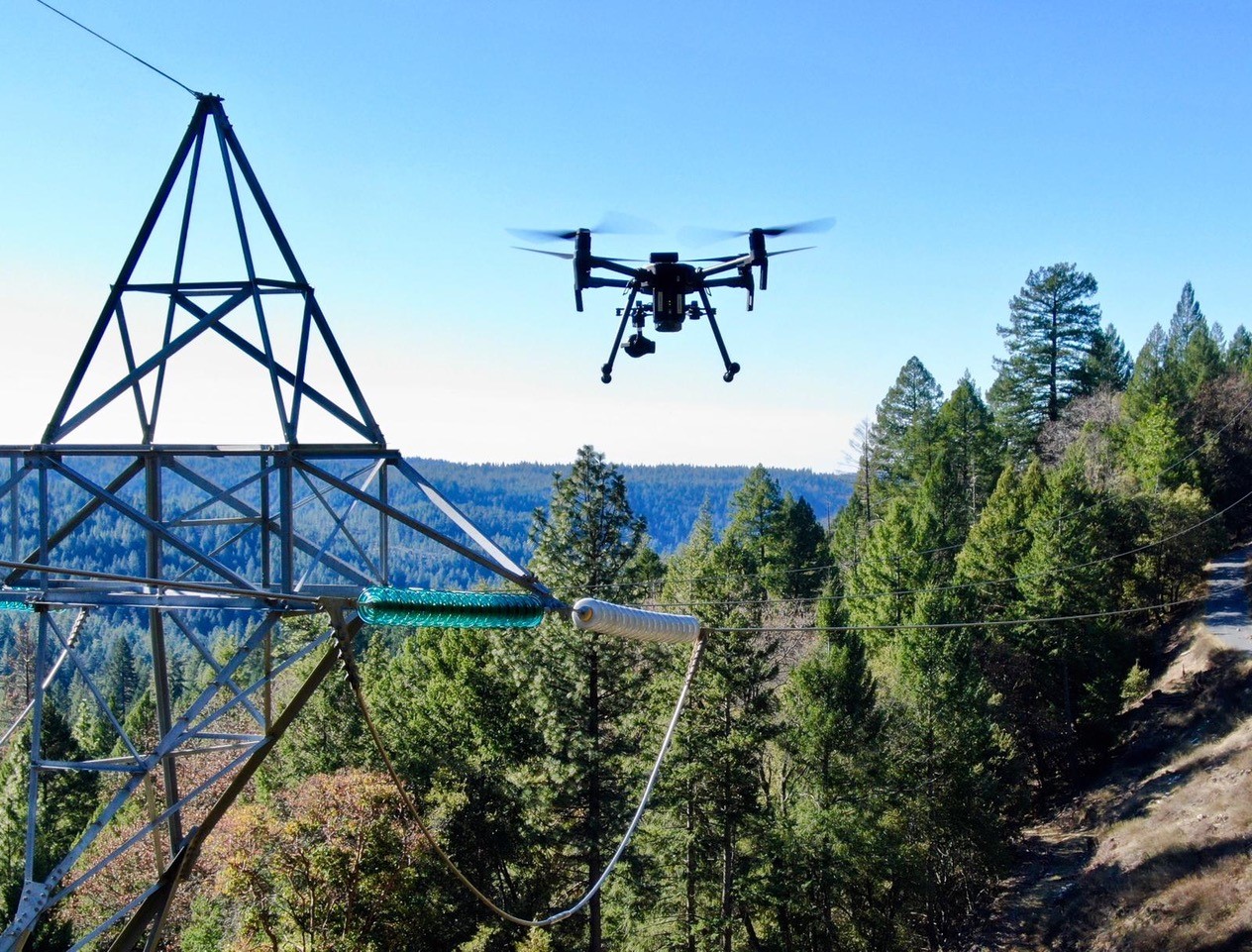As part of our aggressive efforts to protect our customers and communities from catastrophic wildfires, our company has launched a new program to leverage drone technology for electrical equipment inspection. The new initiative is called the Drone Investigation, Assessment & Repair (DIAR) Program.
DIAR is a stand-alone pilot program that began in August 2019 to assist and enhance the evaluation of SDG&E’s overhead electric distribution lines and poles located in the highest fire risk threat area - Tier 3 High Fire Threat District, which encompasses San Diego’s rural inland valleys, foothills and mountainous communities in the northern and eastern portions of the county.
Historically, SDG&E’s electric infrastructure has been inspected by ground crews and helicopters, which presented some challenges. The use of drones improves that process in so many ways. Fire prone communities tend to be in hard to reach areas that would usually require treacherous hiking and the use of helicopters. Because drones can fly very close to the powerlines and equipment, it enables crews to get a much closer look to assess and document the conditions. If damage is found, crews will prioritize repairs in those areas.
The program's goal is photograph approximately 40,000 poles in the Tier 3 High Fire Threat District in the next three to five months. With the successful execution of this initial phase, SDG&E will move forward with the assessment of all equipment in the Tier 2 high fire-threat areas, which includes approximately 46,000 poles.
The safety of our crews and contract crews is paramount. We encourage residents to treat our crews with respect; their priority is to conduct these inspections to make our system safer. If there are any questions regarding drones flying near a property, residents can call our project information line at 1-844-765-6388 and we’ll be able to provide more information.
Project Timeline:
- Aug. 26, 2019 – DIAR Pilot Program Initiated
- Aug. 26 – Oct. – Drone Pilot selection/training and program development
- Oct. 1, 2019 – Begin Phase 1 Drone Flights in Tier 3
- March 31, 2020 – Finish data capture on 40,000 poles in Tier 3
- Jan. 1, 2020 – Begin Drone Flights in Tier 2
Q&A
Q: How can residents be assured that SDG&E is not taking pictures of their home or property with these drones?
A: Drones will be used to collect photographs of SDG&E electric infrastructure which will be evaluated by qualified SDG&E personnel and its contractors. The objective of the program is to take photos of SDG&E infrastructure and not the surrounding areas. The photographs are viewed by qualified electrical workers to assess SDG&E infrastructure and are maintained in a secure electronic environment.
Q: How do residents know if a drone flying over their property is an SDG&E drone or another one?
A: Generally, SDG&E drones will be hovering over SDG&E electric infrastructure only, such as power lines and poles. All SDG&E’s drones are outfitted with a GPS tracker and can be identified and located to a specific area. If there are any questions regarding drones flying near a property, residents can call our project information line at 1-844-765-6388 and we’ll be able to provide more information.
Q: How often and during what hours should residents expect to see or hear SDG&E drones?
A: During Phase 1 of the pilot program, drone inspections may take place daily during daylight hours in Tier 3 of the High Fire Threat District, which includes the communities of Ramona, Fallbrook, Descanso, Pine Valley, and Alpine. Depending on the complexity of the pole or equipment, an inspection can take between 20 minutes to approximately two hours to complete.
Q: Will my service be interrupted during a drone inspection?
A: During a drone assessment, electric service will continue without interruption. Drone-related activities may temporarily increase noise levels or dust. Our crews will do their best to minimize impacts to area residents.
Q: If SDG&E discovers a problem with one of their electric lines near my property, will I be notified? How long will it take to have the problem fixed?
A: If an inspection shows an immediate hazard, such as material hanging from a conductor or a broken crossarm, then we will make every effort to deploy crews to fix or make the repair within 24 hours. Depending on the repair, an outage may be necessary. For other minor equipment issues, each issue is addressed or repaired within the normal compliance maintenance process.


